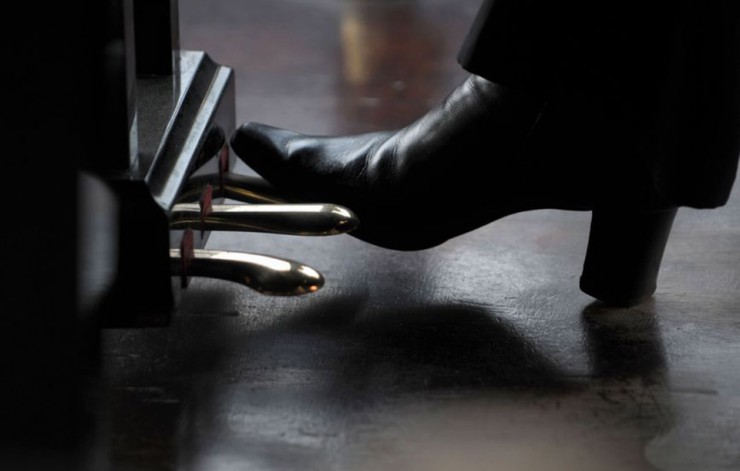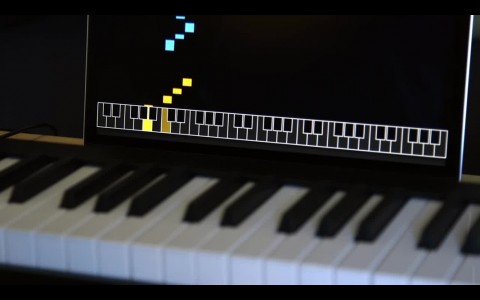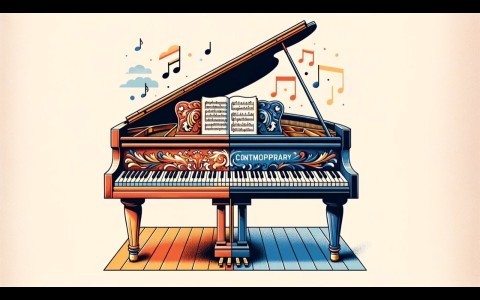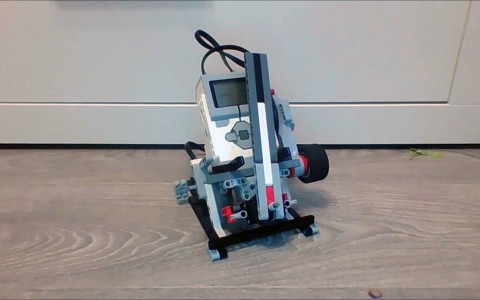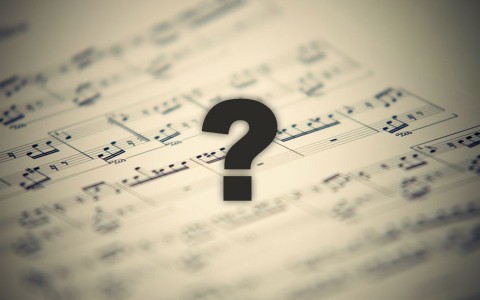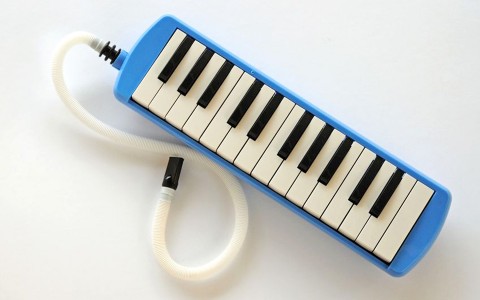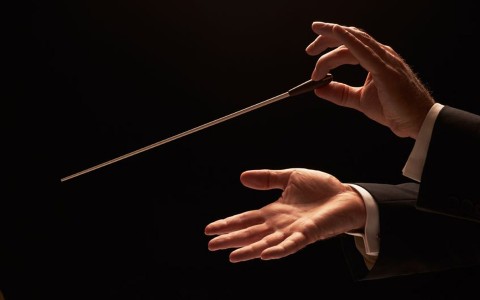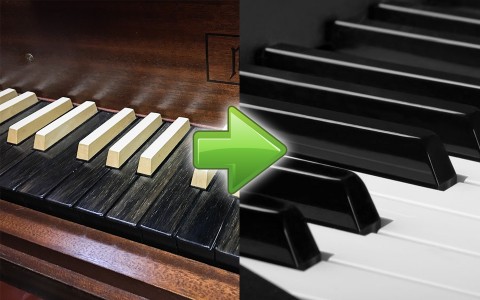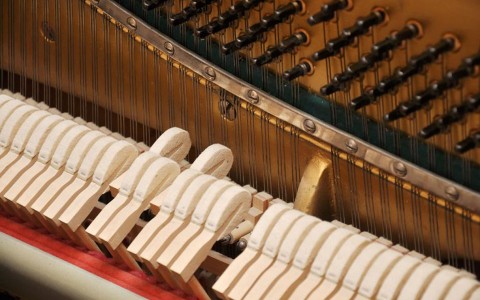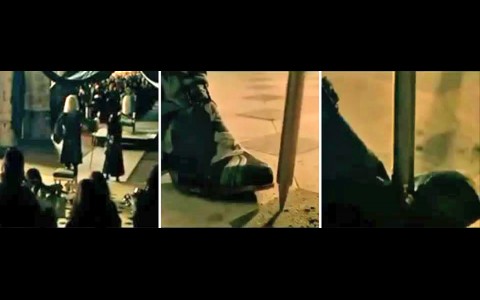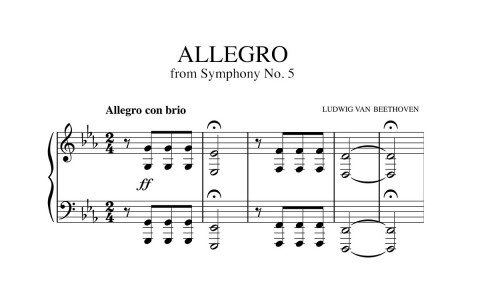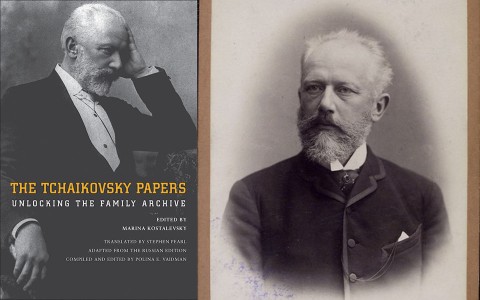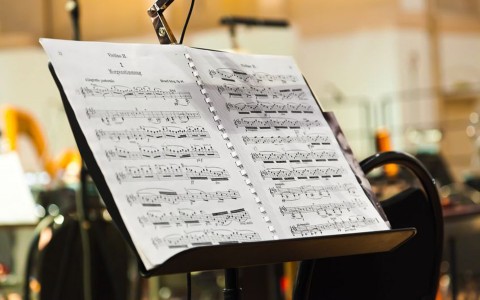Most pianos have 3 pedals. The development of the piano's pedals is an evolution that began from the very earliest days of the piano, and continued through the late nineteenth century. Throughout the years, the piano had as few as one pedal, and as many as six or more, before finally arriving at its current configuration of three. Starting from the left, they are the soft pedal (or una corda), the sostenuto pedal, and the sustaining pedal (or damper pedal).
Soft Pedal
The soft pedal is interesting. It is used the enhance the timbre of softly played notes, and exagerrate a low volume. It was invented by Bartolomeo Cristofori in 1722.
On most upright pianos, you don't visually see any immediate effect. However, you would see a slight shift of the keyboard towards the right in a grand piano.
That slight shift causes the hammer to strike one string (una corda), instead of the normal three (tre corde) for some notes, and the sounds are now produced softer.
For bass notes which only has one string to begin with, the hammer now hits a lesser used portion of the string. You must be wondering - how do those pianos with keyboards that do not shift towards right, achieve a similar effect? The hammers, in this case, are moved closer to the strings, so that the reduced distance between them also diminishes the speed at which they strike the strings, consequently producing softer sounds.
Note that, however, the tone quality does not change in the same way the soft pedal does in a grand piano.
Sostenuto Pedal
The sostenuto pedal (middle) is played with the right foot. It was the last addition to the modern piano, and was invented by Steinway & Sons in 1874, with Patent No. 156,388.
It allows certain notes to be sustained while other notes on the piano are unaffected. It is used by hitting the desired notes, then depressing the pedal. The selected notes will resonate until the pedal is released. This way, sustained notes can be heard alongside notes played with a staccato effect.
In piano notation, use of the sostenuto pedal begins with Sost. Ped., and ends with a large asterisk. Notes meant to be sustained are sometimes marked by hollow, diamond-shaped notes, but there are no strict rules for this pedal since it is hardly ever used.
It is absent in most upright pianos which replaces it with practice pedal instead. In this case, a muffler rail of felt is placed between the hammers and the strings, so that the sounds are significantly softened, and the pianist can practice quietly.
Sustain Pedal (or Damper Pedal)
The sustain pedal is used most often. When it is depressed, all dampers are lifted up! This allows all the strings to vibrate freely, and the sounds last until they have decayed naturally or the sustain pedal is released. Thus, when a succession of keys are hit, the sounds seem to overlap.
The sustain pedal was originally operated by hand, and an assistant was required to operate it! The creators of the sustain foot pedal are unknown, but it is believed to have been invented around the mid-1700s. Use of the sustain was uncommon until the Romantic Period.
In piano notation, use of the sustain pedal begins with Ped., and ends with a large asterisk. Variable pedal marks, seen as __/\_/\__, are placed under notes, and define the precise pattern in which the sustain pedal is depressed and released. Horizontal lines show when the sustain pedal is depressed. Diagonal lines indicate a quick, temporary release of the sustain pedal.
